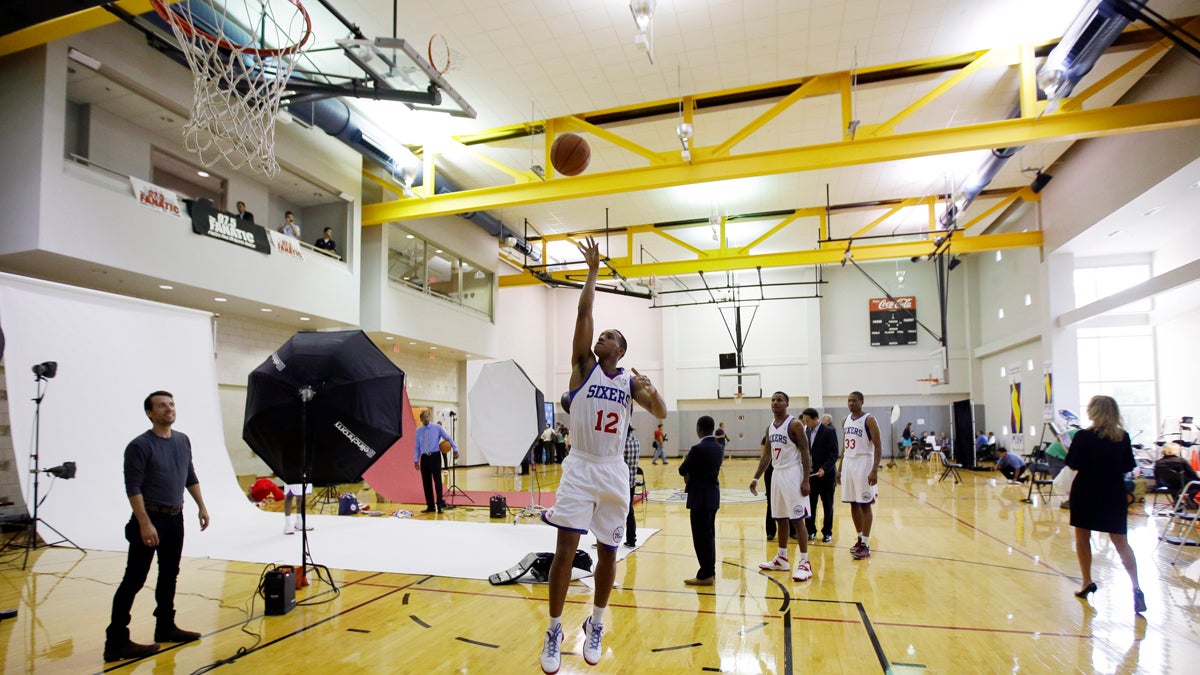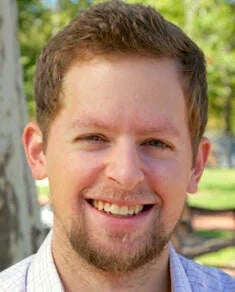How do you get to an NBA championship? Practice facility, practice facility, practice facility
Listen
Philadelphia 76ers' Evan Turner goes up for a shot as he waits on photographers during NBA basketball media day at the team's practice facility in 2013, in Philadelphia. By next summer, the Sixers hope to open an $82 million, 120,000-square-foot facility across the Delaware River in Camden. (AP photo/file)
Bright lights, cheering fans, thunderous team introductions.
You won’t find any of these things inside an NBA practice facility. For players and league execs, though, these buildings have become just as important as the arenas where championships are won.
Especially now, as teams – particularly struggling ones such as the Philadelphia 76ers – look to upgrade their rosters during the offseason.
A lot of it comes down to free agency, a months-long process that kicks off about a week after Thursday’s NBA draft. In most cases, it’s the time of year when players whose contracts are up decide to sign with a new team or re-sign with their current one.
Retirement is yet another option.
In 2015, guys like LeBron James, Dwayne Wade and Tim Duncan will be making that call.
Location and money are obviously huge parts of the process, not to mention a franchise’s pitch to a player. But a team’s practice facility can certainly color a deal too.
By far, players spend the most time where they practice and, in today’s league, training is essentially year-round. What’s more, the competition for roster spots is getting stiffer as the NBA becomes more and more international.
Practice facility makes perfect investment
So, the thinking goes, why not have the nicest practice facility possible? One that offers players the best chance to stay in shape and healthy?
“Just to make sure you don’t shoot yourself in the foot,” said Ken Shropshire, who teaches sports business at the University of Pennsylvania.
Teams also see these facilities as good, long-term investments.
“There’s always this balance between the economics and winning. Do you want to be financially successful? Do you want to be successful on the court or the field of play?” said Shropshire. “Sometimes those things align.”
It’s all turned practice into big business.
Following in the footsteps of the NFL, just about every NBA team has one. But many franchises are now building — or have plans to build — multimillion-dollar, state-of-the-art replacements.
They’re open 24/7, have the best courts money can buy, top-shelf medical staff and often much, much more.
In Oklahoma City, for example, Thunder players can have their hair cut, cars detailed. There’s even a built-in restaurant.
By next summer, the Sixers, the only team without its own practice facility, hope to open an $82 million, 120,000-square-foot facility across the Delaware River in Camden, about a 10-minute ride from Center City.
No word yet on whether there will be a barbershop, but one thing is for sure: Sixers CEO Scott O’Neil feels pretty good about what the franchise is building.
“This will be the biggest and best training facility ever built in the U.S,” says O’Neil.
Basic training facility a thing of the past
It wasn’t always this way.
Twenty years ago, a few teams had their own practice facilities, but a lot more shared space with colleges in the area.
“Back in ’94 when I came out, the only thing you wanted to see was where you played the games at,” said former Sixers guard Aaron McKie.
Which was good. McKie was a Portland Trailblazer then and the team’s space at Lewis & Clark College was nothing special by today’s standards – even for some NCAA teams.
The court had two baskets and a no-frills locker room also used by students.
No leather chairs. No wood paneling.
“You just had a long bench and you had like a little cubby hole, which really wasn’t yours. So you really wouldn’t keep your practice gear or you wouldn’t keep your sneakers. We would take our sneakers with us or our equipment guy would have a big bag and keep all the sneakers in there,” said McKie.
In Philadelphia, it was pretty much the same story. The team has practiced at PCOM — The Philadelphia College of Osteopathic Medicine on City Line Avenue since 1999. That’s meant players and med students have regularly seen one another.
During her days as a PCOM student, Naz Dastgir said, most of the players stuck to themselves. Center Dikembe Mutumbo, though, he was different.
Dastgir and her friends got to know him and hung out together.
“[He] would say, ‘Oh do you want to go out for some Ethiopian food?’ So it would be, my friend, Mutumbo and his bodyguard and we also went to a Jay-Z concert together,” said Dastgir.
They got along great, even though Mutumbo towers 2 feet over Dastgir.
“I found him to be a really classy, well-educated, well-meaning, good-hearted person, and he was just a pleasure to be around. It was kind of a fluke of an experience,” said Dastgir.
Playing is serious business
It’s one that won’t happen at the new Sixers facility coming to Camden.
Phil Allen, a host with the sports radio station 97.5, The Fanatic, said players are simply too valuable to teams to leave anything to chance.
Unlike in some pro leagues, contract dollars are 100 percent guaranteed in the NBA and so, more often than not, it’s the team that will take the hit if a player gets hurt.
“I want to get that last fourth or fifth year out of that deal. Let me keep him at the highest possible level that I can,” said Allen, describing the philosophy of the team owners.
If that means building an expensive, high-tech practice facility — so be it. The alternative may not be pretty.
WHYY is your source for fact-based, in-depth journalism and information. As a nonprofit organization, we rely on financial support from readers like you. Please give today.





